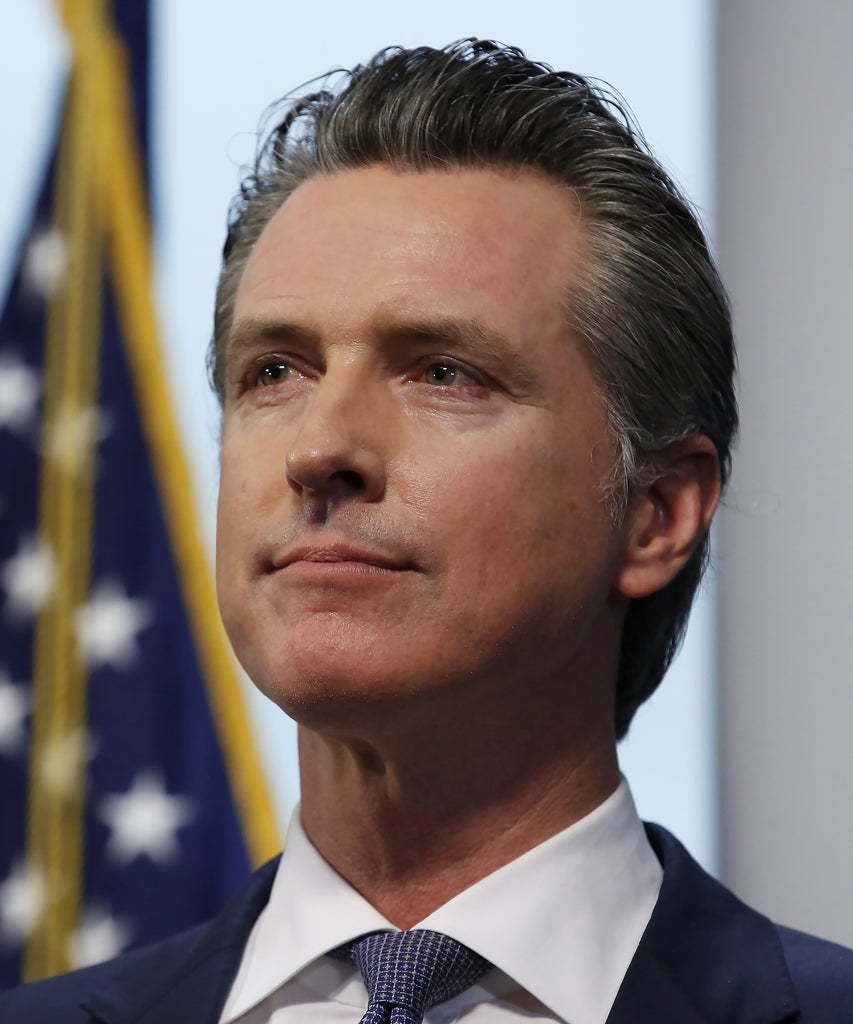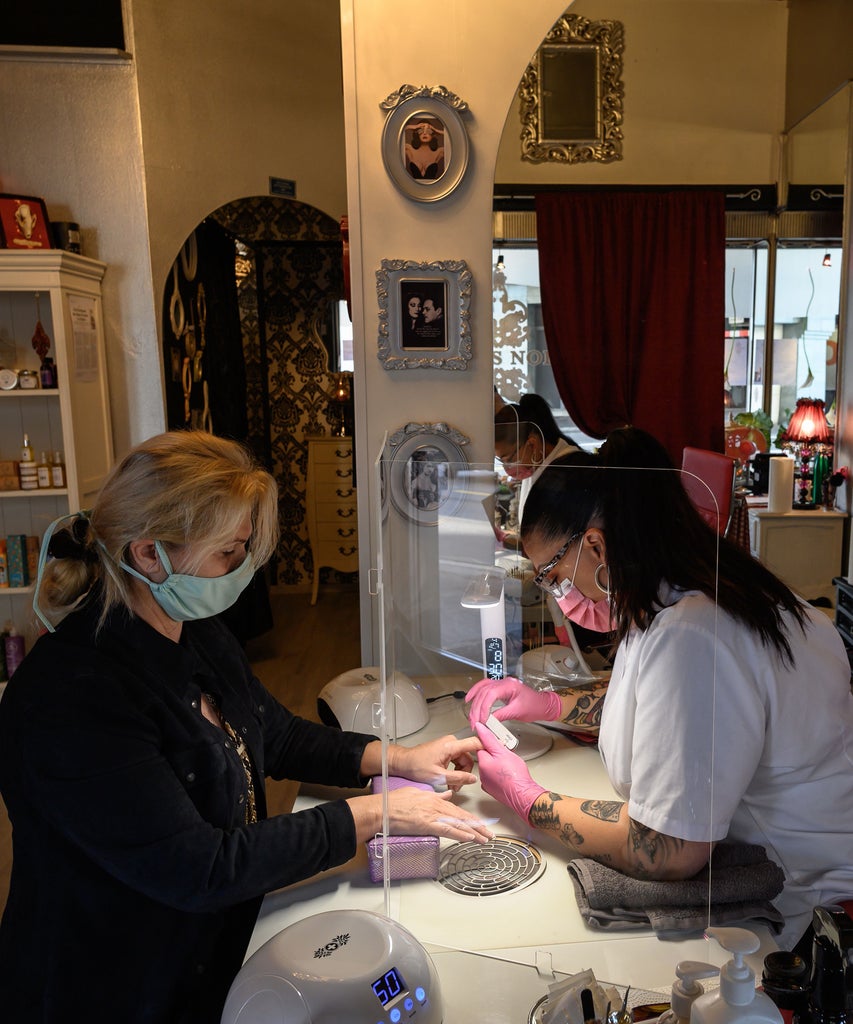In the final minutes of a press conference Thursday, California Governor Gavin Newsom pinpointed the state’s first known COVID-19 community-spread, previously declared in Solano County, to a nail salon. “This whole thing started in the state of California, the first community spread, in a nail salon,” Newsom said. “I’m very worried about that… right now, all of our health indicators and health directives that I received from health directors across the state put some red flags in that space.”

His explanation was meant to justify his decision to classify nail salons as higher-risk environments than schools, and therefore designate them to open during phase three of his four-phase plan to get the country’s largest economy back online — while limiting continued spread in a state that, as of Friday, had 64,532 confirmed COVID-19 cases and 2,630 deaths, according to the LA Times. But instead, the vague statement rang out as a brutal blow to the already vulnerable nail industry.
“I think it was an irresponsible and reckless thing to say because there was no meat behind it — no facts, no details, no explanation,” says Tran Wills, owner of Base Coat nail salon, which has two freestanding locations in Los Angeles (and another three locations within California-based Nordstrom stores). “I’ve been trying to call the California Department of Public Health for more information, but can’t get through. My emotions of anger and sadness are running high.”
“I agree with California taking the time and doing due diligence to protect residents and consumers, but please keep in touch with us so we have information and respond to us when we’re asking questions.”
Michelle Saunders James, Salon owner
Wills wasn’t the only one left confused and embroiled by Newsom’s statement. Nail artists, like Ashlie Johnson, took to Instagram to share their utter disbelief, while the California Healthy Nail Salon Collaborative issued a statement condemning his remarks as having “wide-reaching and detrimental impacts on Asian-American communities.” Salon owners agree. “For a business like ours, that’s already suffering and really trying to break the negative stereotypes associated with the industry, these statements are going to make it much harder to build people’s confidence around going to a nail salon again,” says Jina Javier, owner of Leo nail salon in San Diego’s North Park neighborhood.
In a press conference the next day, Newsom was asked to provide traceable evidence to back his statement. “I have a deep reverence for those entrepreneurs and people that put everything on the line… By no stretch was that intended — it’s just a factual statement — and it was not a statement to be extrapolated as an indictment, quite the contrary, of an industry I deeply respect,” he said. “We’re trying to do everything we can to accommodate the needs of all industries, including the nail salon industry, and make sure that we do it in a safe and responsible way.” At press time, the governor’s office did not provide Refinery29 with further information about how it sourced the location of the first community-spread case, and Solano Public Health officials told ABC7 that they did not release this information nor could they confirm it.

Despite his praise for those who comprise the industry, Newsom’s statement did little to clarify the basis of his original claim, comfort those impacted, or offer a deeper perspective that would help salon owners make actionable changes for patrons and staff members to feel safer in the future. “He’s still saying it’s factual, but not providing facts… The damage is done,” says Wills.
California nail salons — which comprise nearly 20% of all salons in the country — lie at a unique crossroads of the landscape of American businesses wiped out by COVID-19. Not only is it more difficult to strategically change their business model — like offering streaming services online or to-go pickup — the nail business has also struggled with its reputation as a fast-and-cheap treatment staffed by undervalued workers to which customers often forge little connection. That means that loyal patrons are less likely to pre-book appointments, contribute to GoFundMe campaigns, or buy gift cards — all efforts that have helped some hairstylists stay afloat in the interim.
Add on the fact that the nail industry is almost fully comprised of women (81%) and immigrant workers (79%), one third of which are heads of households and self-employed, and the sudden loss of work is devastating. It’s something that worries Tuya Damdin, a 40-year-old nail tech who is eager to get back to work after her salon in Studio City, California shuttered on March 17, 2020. Though Damdin has filed for and been accepted for unemployment benefits, she has yet to receive any payment.
Damdin is concerned that the Governor’s statements pin an unhygienic reputation on the nail salon sector — something that will further negatively affect her financial health. “It has me worried because I don’t know when I’ll go back to work — probably not anytime soon — and when the salon reopens, will customers feel comfortable to come in?” she says. “Even before the virus, our everyday thing was to sanitize and clean everything and to wear gloves and masks. Retail, Uber, there are tons of businesses that don’t have the intensive hygiene practices as nail salons do.”
Newsom himself recognized the hygienic standards set by reputable nail salons. “Many have certainly informed me… many of the practices that you would otherwise expect of a modification were already in play in many of these salons, with people that had procedure masks on, were using gloves and were advancing higher levels of sanitation,” he said Thursday. But it doesn’t override the stigma that comes with a random revelation of the first community-spread COVID-19 case, nor does it speak to providing support to the industry now or down the road.
For her part, salon owner Michelle Saunders James of Oakland’s Saunders & James Nail Care is looking for more context from the governor’s office about what transpired with California’s first community-spread case so she can heighten preventative practices past the industry’s pre-pandemic standards. “What he mentioned was generalized, therefore we don’t know how to protect ourselves or customers,” she says. “I agree with California taking the time and doing due diligence to protect residents and consumers, but please keep in touch with us so we have information and respond to us when we’re asking questions.”

James, a 30-year industry veteran, is looking into ordering plastic shields for manicure stations, weighing cloth vs. N95 masks, and researching the best gloves to use going forward. She’ll need to order new supplies and make changes ahead of re-opening, (whenever that may be) and do it on zero income, no less. “We have to make all these efforts, but we’re not supported,” she says.
On top of those obstacles, nail salon owners and workers are facing prejudices that are hitting the industry as a whole. “Most nail salons are minority owned and that’s where the problem [with the governor’s statement] lies,” explains Wills. Some 70% of salon workers in California are Vietnamese American, according to a report by the UCLA Labor Center, and 76% of nail salon workers across the nation identify as Asian American. A new poll by the Center for Public Integrity shows that 60% of Asian Americans have witnessed someone blaming Asian people for the coronavirus pandemic. “We were already getting anti-Asian racism because of coronavirus,” Wills says. “I know nail salons have been dealing with vandalism while we’ve been closed, so this fuels that fire.”
“We were already getting anti-Asian racism because of coronavirus. I know nail salons have been dealing with vandalism while we’ve been closed, so this fuels that fire.”
Tran Wills, salon owner
These outcomes are particularly painful for a community that has built the American nail salon industry to what it is today — and also helped lead the charge to provide grossly undersupplied hospital workers with protective gear. “So many nail salons donated so many supplies. They’re local heroes,” says Johnson. James and Wills donated their entire stock of gloves and masks to Los Angeles and Oakland hospitals.
In the end, salon owners aren’t calling for a swift or unsafe reopening, but rather critical information and a two-way dialogue for the wellbeing of their workers and the people they serve. “While I recognize the Governor’s clarifying statement yesterday… we remain deeply concerned about the potential economic and anti-Asian backlash that has already been inflicted upon this industry from Thursday’s remarks,“ Lisa Fu, executive director of the California Healthy Nail Salon Collaborative Owners, told Refinery29. “Workers fear that his comments are too little, too late and we welcome an open dialogue with the Governor so that he can understand more about the nuances within the nail salon industry and understand their critical needs at this time.”
COVID-19 has been declared a global pandemic. Go to the CDC website for the latest information on symptoms, prevention, and other resources.from refinery29
California Governor Says A Nail Salon Started COVID-19 Spread...
![California Governor Says A Nail Salon Started COVID-19 Spread...]() Reviewed by streakoggi
on
May 09, 2020
Rating:
Reviewed by streakoggi
on
May 09, 2020
Rating:




